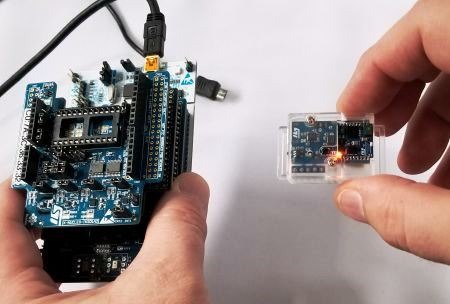🕵️♂️Get Up to 80% Off On All Products, StaySharp⚡
The Future of Smart Dust: Miniature Sensors Revolutionizing Our World
Dive into the world of smart dust! These tiny sensors are revolutionizing data collection in sectors like healthcare, agriculture, and smart cities. Discover their incredible potential and the challenges they face. Explore how these minuscule devices are creating smarter, more connected systems.
EVOLVING TECH
Phillemon Neluvhalani
6/19/20243 min read


Sensors as small as a grain of sand, can monitor and collect data from virtually anywhere. This is the promise of smart dust—a revolutionary technology poised to transform industries by enabling precise, real-time data collection. In this article, we delve into what smart dust is, its applications, and the potential it holds for the future.
What is Smart Dust?
Smart dust refers to a network of tiny, wireless microelectromechanical sensors (MEMS) that can detect and communicate information about their environment, such as light, temperature, and movement. These sensors are designed to be extremely small, often invisible to the naked eye, and can be deployed in large quantities over vast areas.
How Smart Dust Works
Each smart dust particle is a complete system, containing sensors, a power supply, data processing capabilities, and communication mechanisms. These particles can form a network, communicating with each other and with a central hub. The data collected by smart dust can be transmitted wirelessly, making it an incredibly flexible and powerful tool for various applications.
Applications of Smart Dust
1. Environmental Monitoring
- Smart dust can be spread across forests, oceans, and other natural environments to monitor conditions in real time. This can help in tracking climate change, detecting pollution, and studying wildlife behavior.
2. Healthcare
- In the medical field, smart dust can be used to monitor patients’ vital signs continuously. These tiny sensors can be ingested or implanted to provide real-time health data, improving patient care and early disease detection.
3. Industrial Automation
- Manufacturing and industrial sectors can use smart dust to monitor machinery, detect faults, and improve efficiency. These sensors can provide detailed insights into the operational status of equipment, reducing downtime and maintenance costs.
4. Smart Cities
- Urban areas can benefit from smart dust technology by using it for infrastructure monitoring, traffic management, and public safety. For instance, these sensors can be embedded in roads and buildings to monitor structural integrity and detect potential hazards.
5. Agriculture
- Farmers can deploy smart dust across their fields to monitor soil conditions, crop health, and pest activity. This data can help optimize irrigation, fertilization, and pest control, leading to increased crop yields and sustainable farming practices.
Advantages of Smart Dust
Scalability: The small size and low cost of smart dust make it easy to deploy in large numbers.
Precision: Smart dust can provide highly detailed data from specific locations.
Versatility: These sensors can be used in a wide range of environments and applications.
Real-time Monitoring: Continuous data collection allows for immediate responses to changing conditions.
Challenges and Considerations
Despite its potential, smart dust faces several challenges:
Power Supply: Providing a reliable power source for these tiny devices is a significant challenge. Advances in energy harvesting and low-power technologies are crucial.
Data Management: Handling the vast amounts of data generated by smart dust requires robust data processing and storage solutions.
Privacy and Security: As with any technology that collects data, there are concerns about privacy and security. Ensuring that smart dust networks are secure from hacking and misuse is essential.
The Future of Smart Dust
The development and deployment of smart dust technology are still in the early stages, but the possibilities are vast. As the technology matures, it will likely become an integral part of our daily lives, providing invaluable data and insights across various sectors.
Smart dust represents a significant leap forward in sensor technology, offering unprecedented opportunities for monitoring and managing our environment. As researchers and engineers continue to overcome the challenges, the future of smart dust looks incredibly promising, paving the way for smarter, more connected systems.
Smart dust is a groundbreaking technology with the potential to revolutionize how we collect and use data. From environmental monitoring to healthcare and beyond, its applications are vast and varied. As we continue to innovate and refine this technology, smart dust will undoubtedly play a crucial role in shaping a smarter, more connected future.


